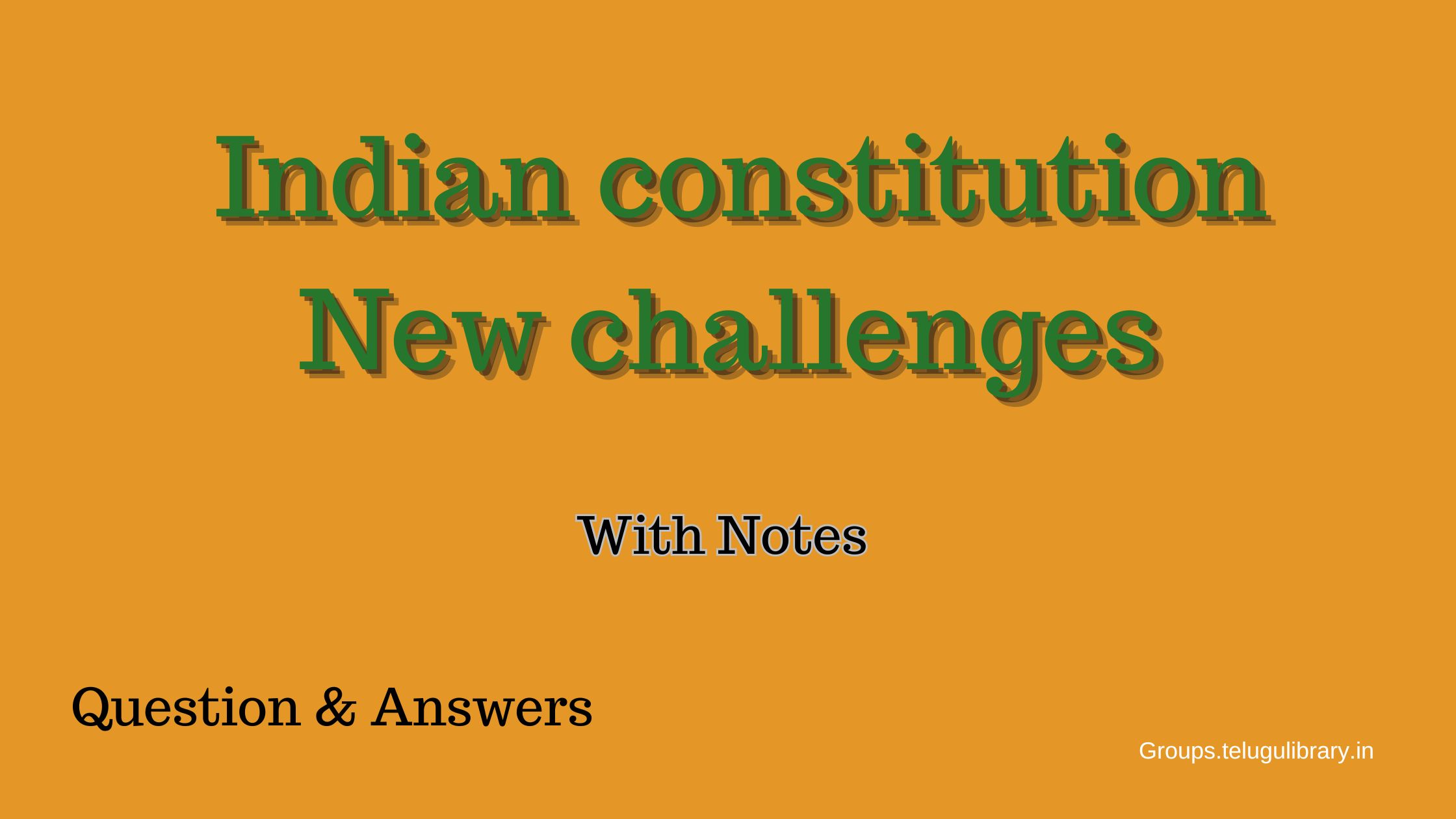Indian constitution New challenges
Certainly! Here are some key points and notes on the Indian Constitution and the new challenges it faces:
1. Introduction to the Indian Constitution:
On January 26, 1950, the Indian Constitution unfurled its mantle of supremacy, draping the nation with the fabric of paramount law.
It is the longest written constitution in the world, containing a preamble and 470 articles.
The Constitution lays down the framework for governance, defines the fundamental rights and duties of citizens, and establishes the powers of various branches of the government.
2. Preamble of the Indian Constitution:
The Preamble outlines the guiding principles of the Constitution, including justice, liberty, equality, and fraternity.
It also emphasizes democracy, secularism, and socialism.
3. Fundamental Rights and Duties:
Fundamental Rights are essential for individual liberty and include rights like freedom of speech, right to equality, and right to life.
Fundamental Duties, added through the 42nd Amendment, stress the responsibilities of citizens towards the nation.
4. New Challenges to the Indian Constitution:
a. Social Challenges:
Caste-based discrimination: Despite constitutional safeguards, caste discrimination persists in many parts of India.
Gender inequality: Gender-based violence, unequal pay, and limited political representation remain issues.
Religious tensions: Communal conflicts and intolerance threaten secularism.
b. Economic Challenges:
Economic inequality: The gap between the rich and poor is widening, leading to social unrest.
Poverty and unemployment: These issues persist, particularly in rural areas.
c. Political Challenges:
Corruption: Political corruption erodes public trust in institutions.
Coalition politics: The multi-party system sometimes leads to unstable governments.
d. Security Challenges:
Terrorism: India faces threats from domestic and international terrorist groups.
Border disputes: Ongoing tensions with neighboring countries pose security challenges.
e. Environmental Challenges:
Climate change: India is vulnerable to climate-related disasters.
Pollution: Air and water pollution pose health hazards.
f. Technological Challenges:
Digital divide: Unequal access to technology can perpetuate disparities.
Privacy concerns: The digital age raises questions about data protection and surveillance.
5. Constitutional Amendments:
The Constitution has been amended numerous times to adapt to changing circumstances.
The 73rd and 74th Amendments decentralized power to local governments.
6. Role of Judiciary:
The Supreme Court interprets and safeguards the Constitution’s spirit.
Landmark cases have shaped constitutional law in India.
7. Way Forward:
Constitutional reforms: Ongoing amendments should address contemporary challenges.
Public awareness: Citizens should be educated about their rights and duties.
Strengthening institutions: Transparency and accountability are crucial.
8. Conclusion:
The Indian Constitution is a living document that must adapt to evolving challenges while upholding its core values.
Students can use these notes as a starting point for understanding the Indian Constitution and the challenges it faces. They can also delve deeper into specific areas of interest and explore case studies and examples to gain a more comprehensive understanding of the subject.
Indian constitution New challenges Here are some questions and answers:
Q1: What are the key principles outlined in the Preamble of the Indian Constitution?
A1: The Preamble of the Indian Constitution outlines the key principles, including justice, liberty, equality, and fraternity. It also emphasizes democracy, secularism, and socialism.
Q2: What are some of the social challenges faced by the Indian Constitution?
A2: Social challenges in India include caste-based discrimination, gender inequality, and religious tensions. Despite constitutional safeguards, caste discrimination persists, gender-based violence is a concern, and communal conflicts threaten secularism.
Q3: What are some economic challenges confronting the Indian Constitution?
A3: Economic challenges include economic inequality, poverty, and unemployment. The gap between the rich and poor is widening, and poverty and unemployment are persistent issues, particularly in rural areas.
Q4: How does the Indian Constitution address political challenges?
A4: Political challenges in India include corruption and the complexities of coalition politics. The Constitution provides for democratic elections and an independent judiciary to address corruption issues. Coalition politics can sometimes lead to unstable governments.
Q5: What are some security challenges that India faces, according to the Constitution?
A5: Security challenges include terrorism and border disputes. India faces threats from domestic and international terrorist groups, and ongoing tensions with neighboring countries pose security challenges.
Q6: What environmental challenges does the Indian Constitution need to address?
A6: Environmental challenges include climate change and pollution. India is vulnerable to climate-related disasters, and air and water pollution pose health hazards.
Indian constitution New challenges…
Q7: How does technology present challenges to the Indian Constitution?
A7: Technological challenges include the digital divide and privacy concerns. Unequal access to technology can perpetuate disparities, and the digital age raises questions about data protection and surveillance.
Q8: What role does the judiciary play in upholding the Indian Constitution?
A8: The judiciary, particularly the Supreme Court, plays a crucial role in interpreting and safeguarding the Indian Constitution. It ensures that laws and government actions align with the spirit and principles of the Constitution.
Q9: How can the Indian Constitution address contemporary challenges?
A9: The Indian Constitution can address contemporary challenges through constitutional reforms and amendments. It can also benefit from increased public awareness about rights and duties and by strengthening institutions to promote transparency and accountability.
Q10: What is the importance of the Indian Constitution as a living document?
A10: The Indian Constitution’s status as a living document means it can adapt to changing circumstances while upholding its core values. It remains relevant by addressing new challenges and evolving with the needs of society.
For History and Cultural Heritage of India Topics and Mcqs
Fundamental rights in India constitution
